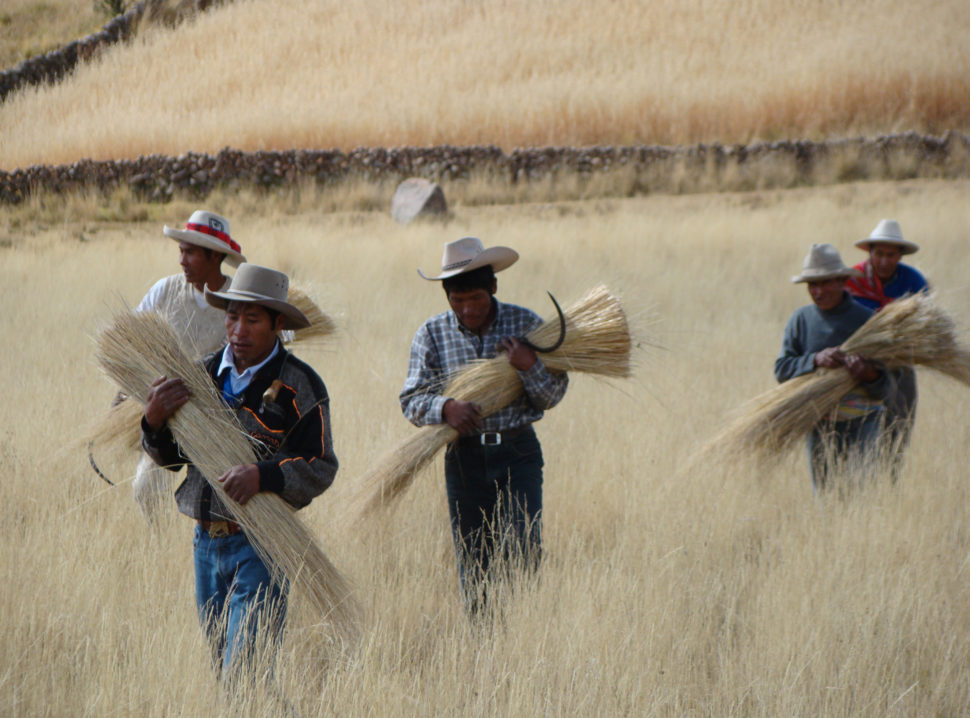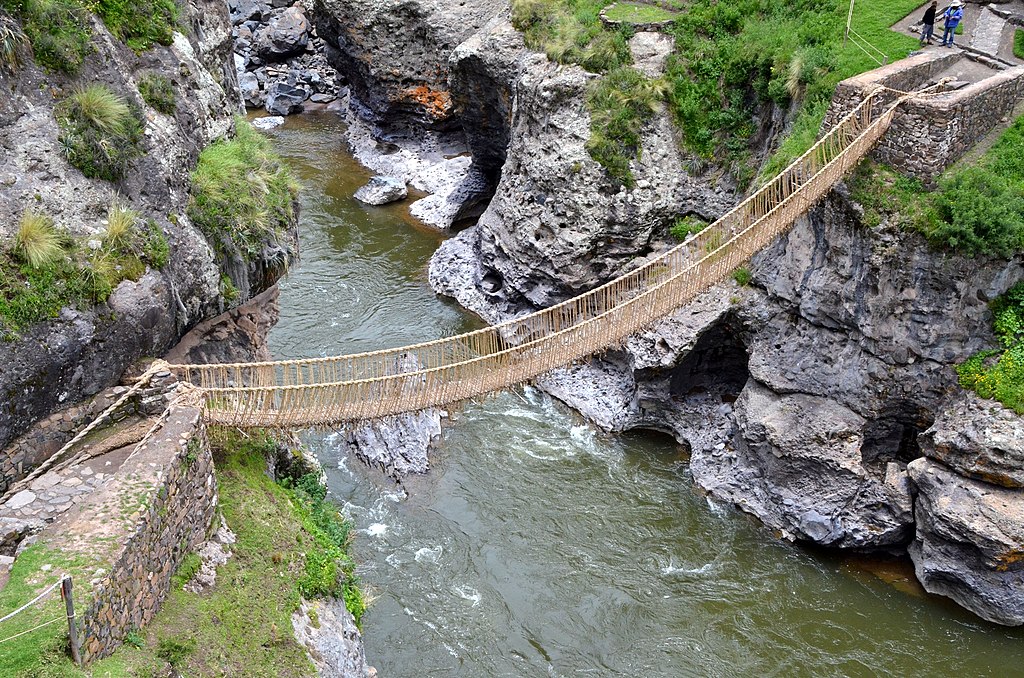Can you imagine walking on a bridge made of grass? Well, it’s possible in Peru. Known as the last remaining Inca suspension bridge, the Q’eswachaka bridge is a breathtaking man-made monument that connects travelers to an era when this indigenous empire ruled South America.
Located on either side of a gorge high in the Peruvian Andes, this aging rope bridge sags precariously over the Apurímac River. It is 28 meters in length, and built 30 meters above the river.
The bridge connects the Huinchiri, Chaupibanda and Chocayhua communities, which live on the left bank, to the Qollana Quehue community on the right bank. It is the last remaining bridge made of grass fibers in Peru. For the locals, this is a symbol that links its inhabitants and nature, their traditions and their history.
For this reason, Q’eswachaka bridge is considered sacred.
It is unknown when exactly this bridge made of grass was constructed. However, some scholars attest that it is part of the Incas’ network of roads built 600 years ago that linked the city of Cusco to the rest of the vast empire. This road network included different types of bridges such as: log bridges, stone bridges, floating bridges, oroyas (sliders) and suspension bridges.
Suspension bridges were the most used in the Inca, as they easily withstood earthquakes. They were constructed of ropes made from ichu (wild grass from the Andes) and could reach lengths of 60 meters.
By Inca order, suspension bridges were renewed once a year through the work of ‘minka ‘ (community work for the benefit of the entire population).

After the Inca Empire, suspension bridges continued to be used due to their earthquake resistance. The best known example is the Qeswachaka Bridge, in the city of Quehue (Cuzco).
The construction of the bridge is proof of how the Inca Empire could develop a highly advanced engineering technique. Located in a high seismic activity region, the flexibility provided by rope suspension bridges was an advantage. However, due to heavy rains in the area, these bridges are less resistant to bad weather than stone bridges, causing them to deteriorate. Thus, the bridges had to be reconstructed periodically.
Although the last remaining Inca bridge is no longer the only road that links the two banks of the Apurímac, the tradition continues year after year, when the inhabitants of Peru’s Quehue district gather to restore the rope suspension bridge.
This centuries-old secular Andean tradition was included on the Representative List of the Intangible Cultural Heritage of Humanity in 2013. Although the renewal lasts only three days, it structures the life of the participating communities all year round, establishing communication, strengthening centuries-old bonds and reaffirming their cultural identity.
The Qeswachaka Bridge ritual starts on the second Sunday of June, when the reconstruction is carried out by a cooperative work from the communities of Huinchiri, Chaupibanda, Ccollana, Quehue and Pelcaro. The ritual involves all the men and women.
A few days before the ritual begins, the inhabitants cut ichu, a hardy grass that grows in the humid highlands of the Andes. It is then twisted and extended, to form q’eswa, which means the long rope.
To visit the Qeswachaka Bridge, you must take a public bus from Cusco to the Combapata district. From there, the take a taxi to the city of Quehue. Hiring a tour guide is recommended. Most travel agencies offer a full day tour, including transportation and food.
During restoration days, it is not possible to cross the Qeswachaka Bridge due to the work being carried out. However, the rest of the year you can cross this suspension bridge.
